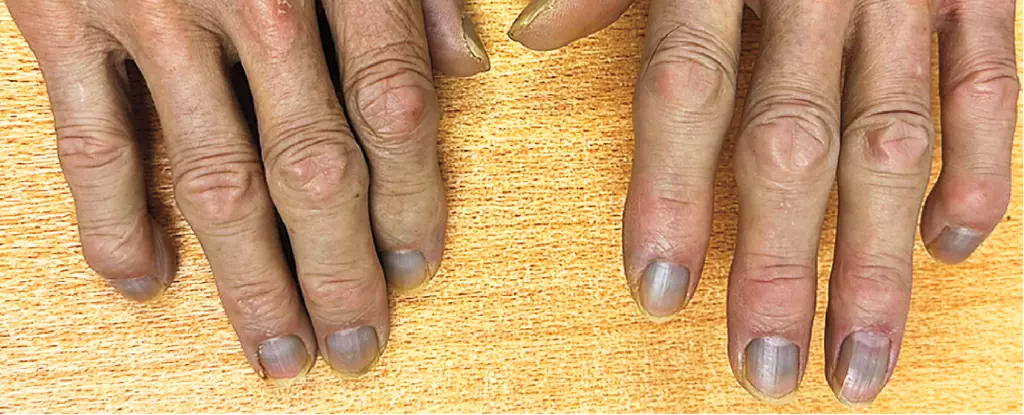An 84-year-old man recently sought medical attention at a Hong Kong hospital due to complications arising from a urinary flow obstruction. However, as clinicians began their assessment, they were drawn to his peculiar physical appearance—specifically, a grayish hue evident in his skin, eyes, and nails. This ashen coloration was not a sudden development; rather, it had been part of his appearance for nearly five years. What began as a simple urological issue quickly transformed into a complex medical riddle, signaling to healthcare professionals that there was more to this patient than first met the eye.
Initial blood tests performed on the 84-year-old uncovered shocking results: a markedly elevated concentration of silver in his system, exceeding typical levels by a factor of over 40. As the clinicians sifted through potential causes, they recognized this condition as argyria—a rare yet fascinating physiological phenomenon resulting from the systemic accumulation of silver in the body’s tissues. This increased silver concentration resulted in its deposition beneath the skin in various areas, such as sweat glands and blood vessels, yielding the characteristic gray or bluish tone prominent in this patient.
Historically, argyria was commonly observed among laborers in professions involving direct exposure to silver, such as jewelers and miners. However, in this case, medical professionals had to consider alternative sources of silver exposure. Interestingly, the man’s profession as a waiter presented no apparent risks for silver contamination, leading to further investigation into other possible origins.
Despite the rarity of argyria, the condition’s connection to colloidal silver is particularly significant in modern discussions regarding health and wellness. Although silver has been employed for its antimicrobial properties throughout history, its widespread acceptance in alternative medicine draws warnings from the US Food and Drug Administration (FDA). The agency has noted that colloidal silver merely lacks scientific backing regarding its safety and effectiveness in treating any diseases. Despite this caution, dietary supplements containing silver proliferate in health stores and online platforms, often marketed under misleading claims promising enhanced detoxification and immune support.
The allure of such products can lead unsuspecting individuals to self-medicate, inadvertently exposing themselves to potentially harmful chemicals without proper guidance. In the case of our 84-year-old patient, determining how he accrued such significant amounts of silver—a substance often absorbed via inhalation, ingestion, or skin contact—remains a mystery. Nevertheless, the implications of his diagnosis prompt scrutiny of sources of silver exposure in the community.
Fortunately, while the cosmetic impact of argyria can be distressing, the long-term health risks associated with silver accumulation are generally deemed minor. In most instances, silver buildup is benign unless it reaches dangerously high levels. The patient’s physicians established that, apart from potential interactions affecting the absorption of certain medications— like antibiotics and thyroid hormones—his condition posed little immediate threat to his overall health.
Despite the benign nature of argyria, the aesthetic dimension cannot be overlooked. For an elderly man who may already struggle with the pressures of aging, the persistent slate-gray appearance could carry significant emotional and social weight. Unfortunately, at present, there are no effective treatments to reverse silver buildup, meaning that the patient may remain in this altered state for the foreseeable future.
As the hospital staff conclude their evaluations, the patient’s case will remain under observation. Tracking the silver levels in his body could yield further insights into the origins of his unusual condition and contribute valuable information to the broader understanding of argyria. In a world where alternative medicine often lapses into hype and exaggeration, this case serves as a clinical reminder of the delicate balance between innovative treatment and consumer safety. The complexities surrounding silver exposure are not just a medical curiosity; they underscore the significant risks posed by unsupervised health practices. While answers may remain elusive, vigilance in understanding argyria continues to be paramount for both patients and physicians alike.

